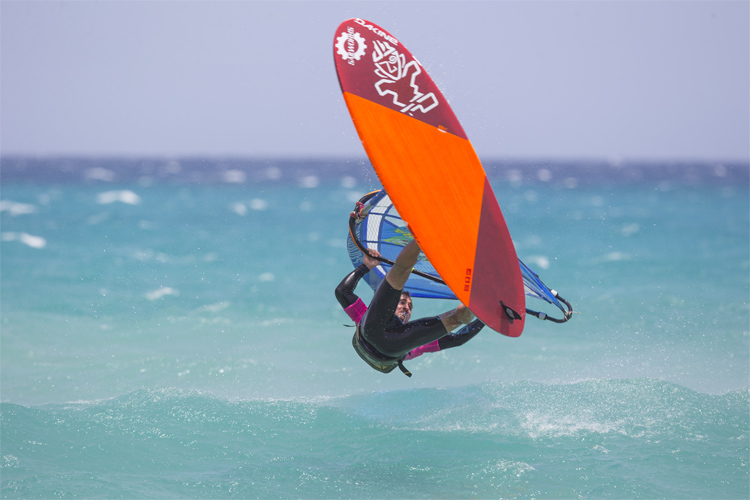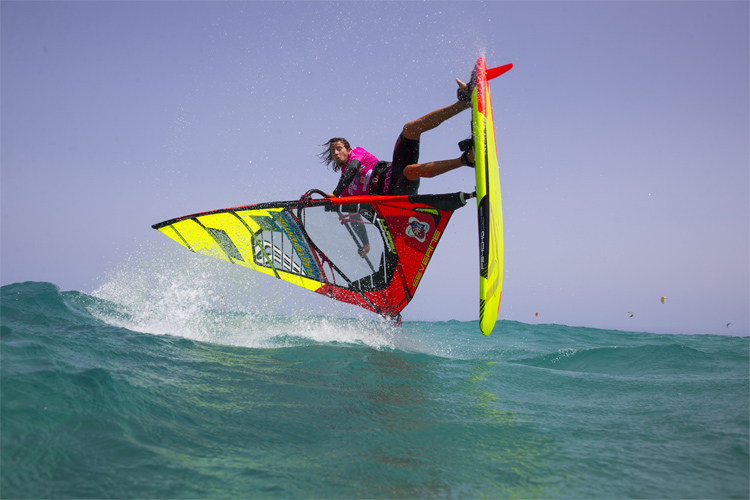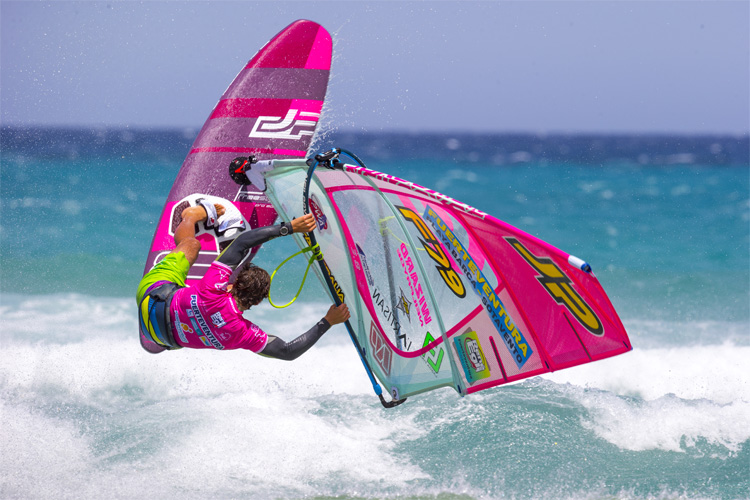Freestyle windsurfing is one of the seven disciplines of the sport of sailboarding.
It blends acrobatics, highly technical sailing skills, speed, and knowledge of the wind and the ocean surface conditions.
Today, freestyle windsurfing attracts not only a large number of amateur and professional athletes but also huge crowds and online followers.
As a high-performance windsurfing division, it requires a lot of training, precision equipment, and advanced fine-tuning experience.
Freestyle windsurfing is one of the most popular disciplines on the Professional Windsurfers Association (PWA) World Tour.
However, from a spectator's perspective, it is never easy to understand, interpret, and evaluate the sailors' maneuvers and skills while competing professionally in front of a panel of judges.
Here's everything you need to know about scoring freestyle windsurfers:

Scoring and the Judging Panel
There are always one or two judging panels with at least three judges.
Whenever a windsurfer performs a trick, each judge awards points on a scale that goes from 1 to 12 in each category, including increments of 1/10th of a point - for example, 7.10 points.
Before the competition begins, the PWA Representative and the Head Freestyle Judge post on the Official Notice Board the number of categories that will be counted toward the result and the multiplication factor for each category.
The winner of each heat is the one who gets more points. In case of a tie, the windsurfer who has the higher single score in the priority category wins.
Whenever the categories are weighted equally, the tie shall be broken in favor of the sailor who has a higher score for overall impression.
If the tie remains, a decision is made in favor of the athlete who has the higher score for technical performance.
If the tie still remains, it shall be decided in favor of the windsurfer who has the highest single score of all the remaining categories.
It is also important to note that the judges' score sheets shall be shown only to the athletes at their request.
They may be copied by a windsurfer only after consultation and approval from the PWA representative.
Last but not least, the scoring and the decisions of the judges may not be appealed.

The Freestyle Windsurfing Guidelines
According to the PWA Rule Book, the expression "free" defines the principle of this windsurfing discipline; it is the pillar and the foundation of the sport.
But judges will be looking for an overall impression of each windsurfer's heat and not on eye-catching, individual maneuvers.
In other words, they want to see the whole heat and how sailors paint the whole canvas.
The PWA notes that the athlete who performs just one big move and little else will not be scored as highly as a windsurfer who can perform several high-class tricks throughout the heat.
The concept of overall impression includes the following variables:
- Diversity: Athletes should be able to perform a wide range of maneuvers and variations during their heat. Tricks performed on different tacks will earn more points;
- Technical Skill: Windsurfers should display maneuvers with a high level of difficulty in order to earn extra points. Uncontrolled tricks will not be awarded points;
- Style: Athletes performing moves that display a personal touch or attitude shall score more points than those who play safe or repeat the same maneuvers over and over again;
Judges are particularly wary of scrappy or disjointed maneuvers. They want to see clean, stylish, difficult, varied, and complicated moves.
They are also keen to evaluate the windsurfer's overall choreography and how he or she decided to execute the whole sequence of moves.
The windsurfer who demonstrates a higher degree of fluidity in individual moves between different tricks in a routine shall be scored more highly than sailors who perform a broken and disjointed heat.
Scores for diversity, technical skill, and style will all be multiplied by a factor of 1, and after giving a final score for the overall impression, it will be multiplied by a factor of 3.
The scores will then be totaled, and the freestyle windsurfer with the highest score will win the heat.
